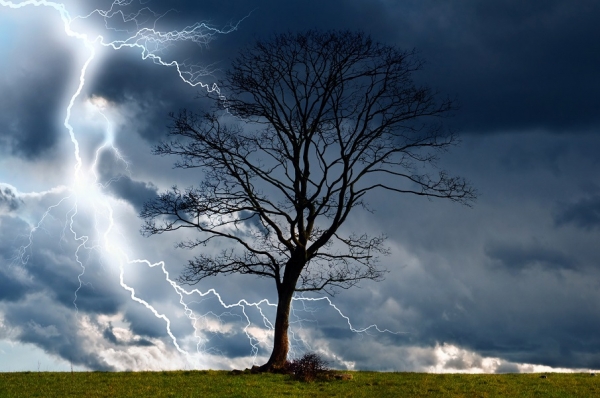Global warming in the Arctic could be causing air currents to stall, bringing more extreme storms to Europe and North America.
(Photo : George Hodan)
Extreme summer heat and rainstorms can be trapped in one area for long periods, according to a new study.
Global warming, raising temperatures in the Arctic, is believed to be the reason the air currents are trapping weather systems. This effect could cause storm systems to linger in one region longer than it normally would, delivering greater amounts of precipitation and damage.
“The large number of recent high-impact extreme weather events has struck and puzzled us. Of course we are warming our atmosphere by emitting CO2 from fossil fuels, but the increase in devastating heat waves in regions like Europe or the US seems disproportionate,” Dim Coumou, of the Potsdam Institute for Climate Impact Research (PIK), and lead author of the study, said.
Air currents, circulating around the globe were closely examined by researchers, looking for possible clues to explain the phenomenon.
A resonance mechanism can serve to trap and amplify storms and heat waves in temperature regions, the study found. Mathematical analysis revealed certain resonance patterns were amplified in strength, while being slowed in velocity, relative to the ground. These events were found to be associated with extreme weather conditions, and formed twice as frequently since 2000 as before.
Rossby Waves, a regular wave pattern that travels over middle latitudes where the United States and Europe reside, can bring cold air to those regions when they blow from north to south. Conversely, they can warm these regions when they blow in the opposite direction. Temperatures on the ground are usually not highly-effected by a few days of this pattern, as long as the current quickly shifts. However, these effects can become pronounced when they continue in one direction for a longer period of time.
“Evidence for actual changes in planetary wave activity was, so far, not clear. But by knowing what patterns to look for, we have now found strong evidence for an increase in these resonance events,” Stefan Rahmstorf, co-author of the article announcing the study, told the press.
Temperatures in the Arctic are rising at roughly twice the global average. This process is partially driven by melting ice sheets. As the frozen surface melts and breaks away from their parent bodies of ice, heat is absorbed by water, rather than being reflected back to space by white ice and snow. As temperatures in the Arctic rise faster than temperature regions, less energy will be available to move air currents, stalling atmospheric circulation, researchers determined.
Study of Rossby waves and their effect on extreme weather events in North America and Europe was profiled in the journal Proceedings of the US National Academy of Sciences (PNAS).







